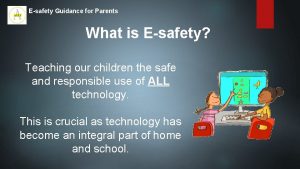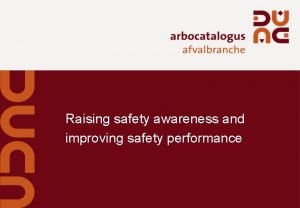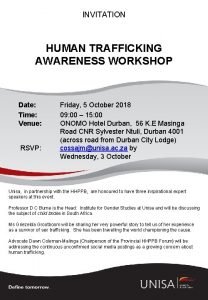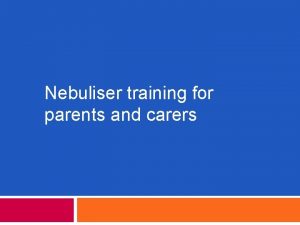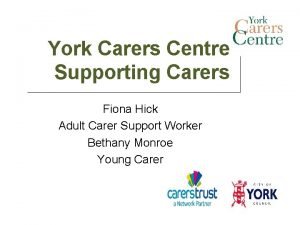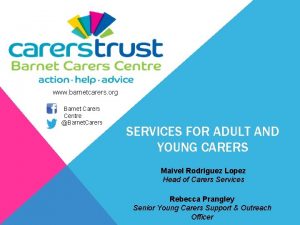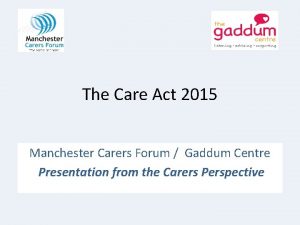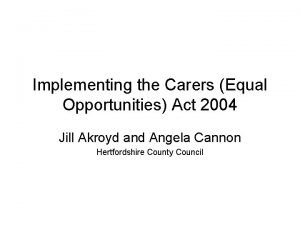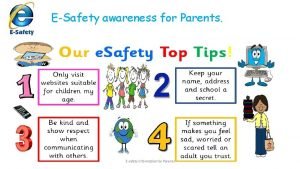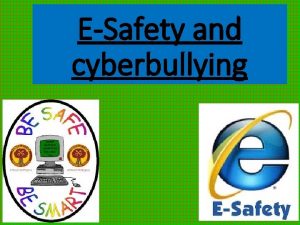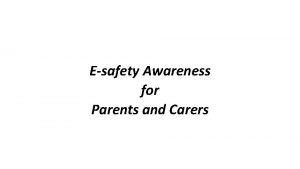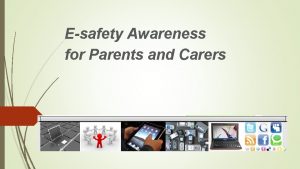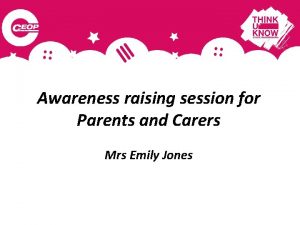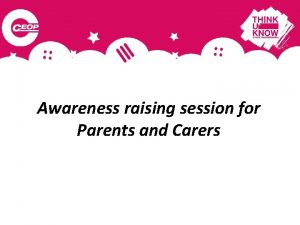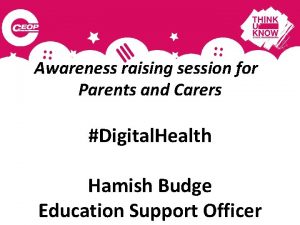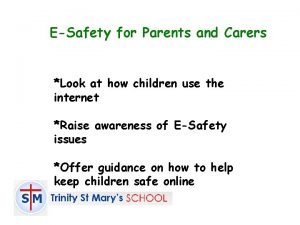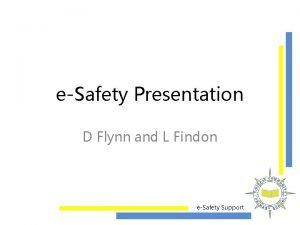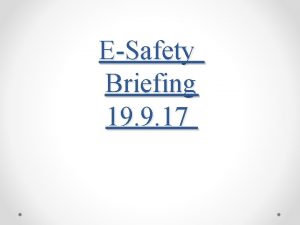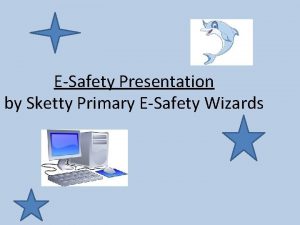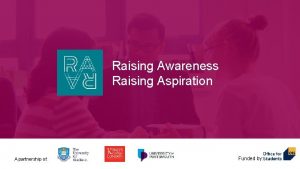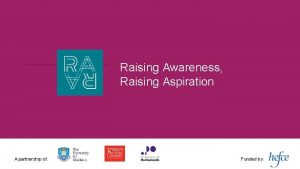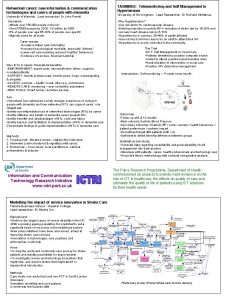ESafety Awareness Raising Session for Parents and Carers



















- Slides: 19

E-Safety Awareness Raising Session for Parents and Carers Mr Norris

Aims of Session 1. Provide an overview of e-safety. 2. Discuss issues that young people face online. 3. Know where to find additional information and resources.

The Facts

The Facts

The Facts

The Facts • Our children have not known a world without Broadband. • Most are unaware of life without: – Smart phones – Computers/Laptops – Tablets – Games consoles – Hand held devices • They feel confident using new sites and technologies.

Communication Money management skills Confidence Learning Online? Research Computer skills Creativity Commitment

What is E-Safety? -Safeguarding children and young people in the digital world. -Using ICT in a safe and responsible way. -Providing the right support and advice to children and young people. -Identifying risks.

What can go wrong?

The Risks Ø Unwittingly sharing personal information Ø Unwanted contact/grooming Ø Harmful content/illegal material Ø Cyber-bullying Ø Privacy/digital footprints Ø Over-use

The Risks

A good start… Learning how to be a responsible digital citizen.

A good start…

A good start… Nine in ten parents mediate their child’s access to the internet in some way: 1. Regularly talking to the child about specific risks. 2. Having rules around access and use. 3. Supervising the child’s online activity. 4. Technical tools. (filters, parental controls etc. )

Managing Risks: CEOP • CEOP (The Child Exploitation and Online Protection Centre) is the UK national lead agency for the protection of children online.

Click CEOP Safety Centre If you click this button you will be taken to the safety centre:

Thinkuknow • CEOP have created their own education program: Thinkuknow http: //www. thinkyouknow. co. uk/.

Top Tips – A Handout 1. Talk to your child about what they’re up to online. 2. Watch Thinkuknow films and cartoons with your child. 3. Keep up-to-date with your child’s development online. 4. Set boundaries in the online world just as you would in the real world. 5. Keep equipment that connects to the internet in a family space if you can or remove from the bedroom at night time 6. Use parental controls on devices that link to the internet, such as the TV, laptops, computers, games consoles and mobile phones.

Unintentional giveaways • Webcam – school uniform and other clues in the background. • Webcam left on or turned on remotely. • Pictures of children on parents or siblings social network – tagging. • Privacy settings left open or incorrect. • Profiles e. g. on MSN – don’t have to give all the information. • A ‘friend’ passes on private info. or pics. • Do you know who you’re talking to?
 Teaching esafety
Teaching esafety Awareness raising tv spot
Awareness raising tv spot Raising safety awareness
Raising safety awareness Cvs privacy awareness and hipaa privacy training
Cvs privacy awareness and hipaa privacy training Department of work and pensions
Department of work and pensions Date, time venue invitation
Date, time venue invitation Meet the parents session
Meet the parents session Nebuliser training
Nebuliser training York young carers
York young carers Barnet carers
Barnet carers Manchester carers forum
Manchester carers forum Carers act 2004
Carers act 2004 Grand parent de frida kahlo
Grand parent de frida kahlo Parents parents
Parents parents Frida kahlo famille arbre généalogique
Frida kahlo famille arbre généalogique Prayer is the raising of the heart and mind to god
Prayer is the raising of the heart and mind to god Trussed beam ladder
Trussed beam ladder Statues of votive figures
Statues of votive figures Raising of the mary rose
Raising of the mary rose Describe preindustrial societies of horticulturalists
Describe preindustrial societies of horticulturalists
